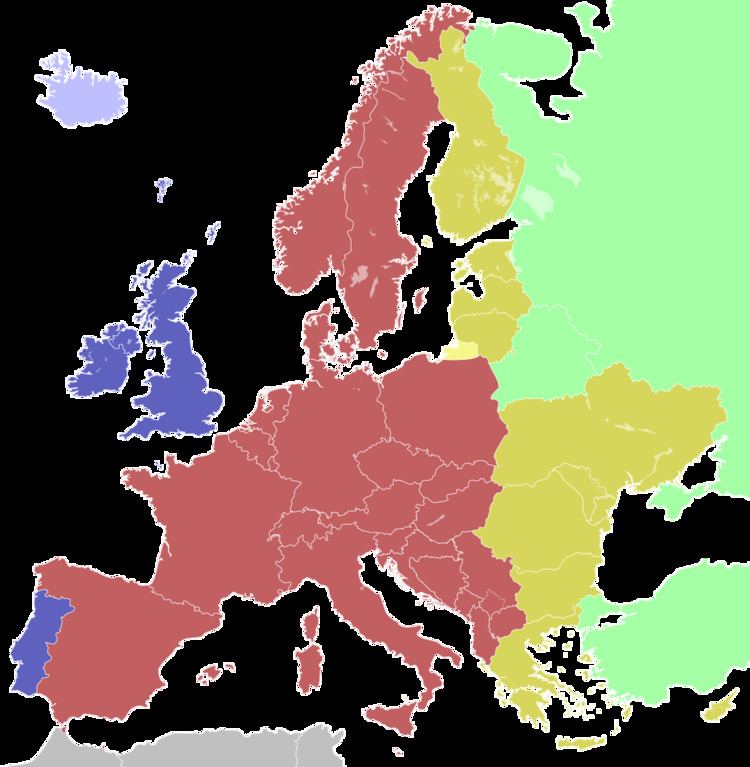 | ||
Europe spans 7 primary time zones (from UTC−01:00 to UTC+05:00), excluding summer time offsets (4 of them can be seen on the map to the right, with 1 further-western zone containing the Azores, and 2 further-eastern zones spanning Georgia, Azerbaijan, eastern territories of European Russia, and the European part of Kazakhstan). Most European countries use summer time and harmonise their summer time adjustments. See Summer time in Europe for details.
The time zones actually in use in Europe differ significantly from their "pure" theoretical variants as used for example under the nautical time system. Theoretically the world is divided into 24 time zones of 15 degrees. However, due to geographical and cultural factors it is not practical to divide the world so evenly and actual time zones may differ significantly from their theoretical borders. In Europe's case, the widespread use of the Central European Time Zone causes a major distortion in some areas from the theoretical time or the solar time. CET is theoretically centred on 15°E. However, Spain lying almost entirely in the Western hemisphere, and France with some regions to the west should theoretically use UTC, as they did before the Second World War. The general result is a solar noon which is much later than clock noon. This results in later sunrises and sunsets than should theoretically happen. The Benelux countries should also theoretically use GMT.
Russia and Belarus have observed "permanent summer time" between March 2011 and October 2014. Since October 2014 Russia observed "permanent winter time". Iceland can be considered to be on "de facto" permanent summer time because, since 1968, it uses UTC time all year, despite being located more than 15° west of the prime meridian. It should therefore be located in UTC-1, but chooses to remain closer to continental European time, resulting in legal times significantly in advance of local solar time.
Use
Of the 28 EU member states, 3 use Western European Time (Ireland, Portugal (Continental Portugal and Madeira) and the United Kingdom) and 8 use Eastern European Time (Finland, Estonia, Latvia, Lithuania, Romania, Bulgaria, Greece and Cyprus). The other 17 member states all use Central European Time (apart from Spain that has one region observing the WET). Norway, Switzerland, Serbia, Kosovo, Macedonia, Montenegro, San Marino, Vatican City, Andorra, Monaco and Liechtenstein also observe the Central European Time. Northern Cyprus and Transnistria observe the Eastern European Time. Azores, in Portugal, observes the Atlantic/Azores Time (UTC-1 with Daylight saving time in the summer) and the Canary Islands, in Spain, observes the Western European Time. Moldova, Belarus and Ukraine (apart from Crimea) observe the Eastern European Time. Turkey, Russia (including Crimea), Belarus, Georgia, Armenia, Azerbaijan, South Ossetia, Abkhazia, Nagorno-Karabakh follow different Time Zones, including Kaliningrad Time, Further-eastern European Time (including Moscow Time), Samara Time, Yekaterinburg Time, the Asian Time Zones of Russia, UTC+04:00 (Armenia, Georgia and Azerbaijan including Nagorno-Karabakh).
